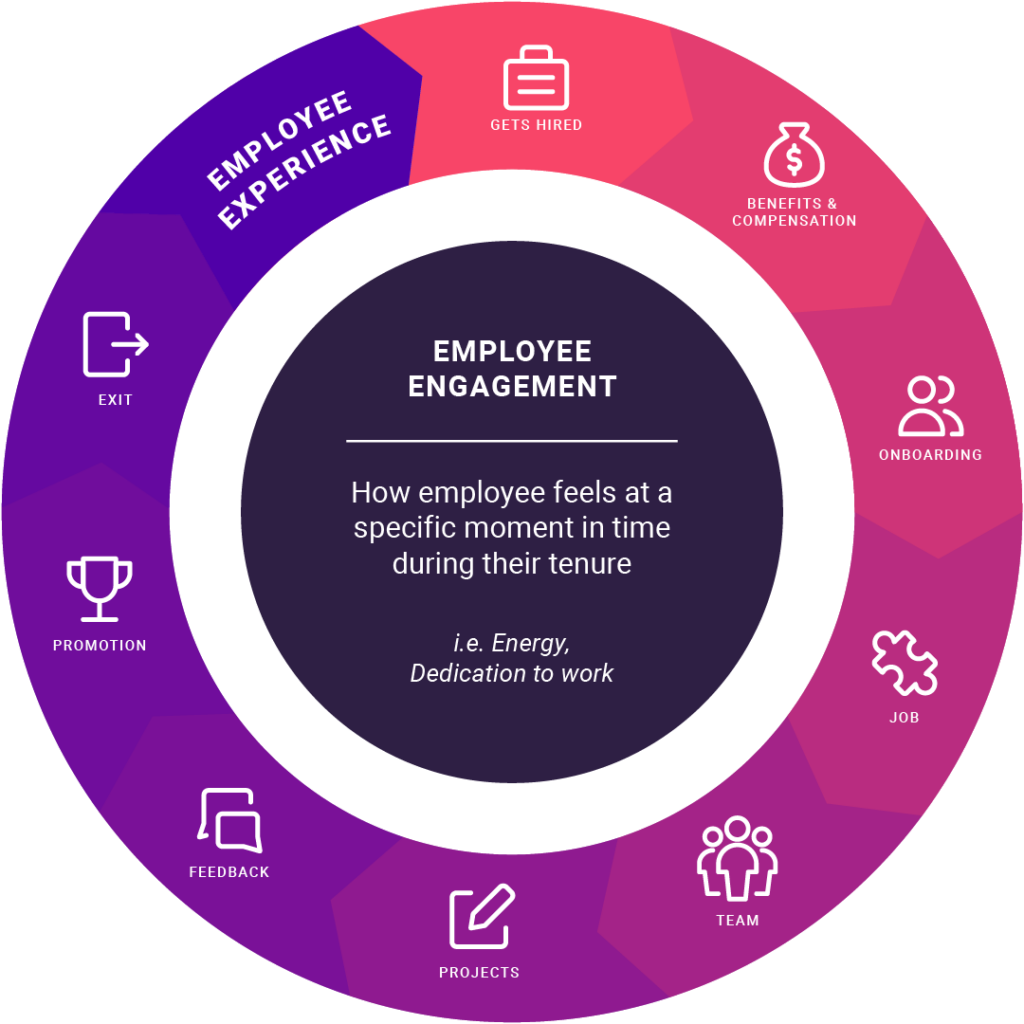PI Diagnose: The four drivers of engagement, and how to measure them
Engagement is something any great organization strives for. When people are engaged by their work, team, and organization, they tend to give their 100% each day. Yet engagement can be a difficult concept to grasp. How do you measure it, let alone improve it?
In this article, you’ll learn the definition of engagement, the four drivers that impact engagement, and how to measure them.
What is employee engagement?
Employee engagement refers to an employee’s emotional commitment to their organization and its goals. Highly engaged employees are energized by their work, positive toward their team, and dedicated to their organization and its mission. At The Predictive Index, researchers measure engagement according to four factors: pride, retention, advocacy, and satisfaction.
How we measure engagement:

Engagement is important in large part because it indicates an individual’s motivational state at work. The more engaged someone feels, the more motivated they’ll likely be to see their work through and do that work well. The more engaged your workforce is overall, the stronger the performance you’ll see out of your people.
While engagement is linked to performance outcomes, it also sheds light into an individual’s well-being. When engagement is low, it may signal a lack of morale among the team, or that certain employees are unhappy with their current work-life situation.
Employee engagement vs. employee experience
While employee engagement is related to the employee experience, the two are far from interchangeable.
Employee engagement refers to an individual employee’s level of energy and dedication to their work at any given moment during their tenure. It indicates a moment in time in the employee lifecycle at an organization.

By contrast, employee experience refers to the entire employee lifecycle. It takes into account every step of an employee’s journey at an organization, from the moment they’re hired to the moment they leave. This experience includes how employees go about their work, their path to getting promoted, their team’s culture, and much more.
In short, engagement is part of the employee experience, but one term is not a substitute for the other.

What drives employee engagement?
As mentioned earlier, PI’s research team measures engagement according to four factors: pride, retention, advocacy, and satisfaction. While these factors help us define what engagement is, they don’t tell us what drives engagement.
To that end, PI’s scientists developed a lightweight, yet powerful, framework called JMPO. JMPO is an acronym representing four drivers of engagement: job, manager, people, and organization. These drivers can either bolster engagement, or hinder it.
The JMPO framework was created by a team of PhDs with backgrounds spanning industrial and organizational psychology, education, and psychometrics. These scientists reviewed academic literature on employee engagement to devise a pool of approximately 100 Likert-type questions (i.e., scale of agreement from 1 to 5) that measure the drivers of engagement.
The team tested these items with a sample of 3,000 working adults across the U.S. to narrow down the pool and identify the questions most strongly linked to engagement. They then conducted exploratory factor analyses (EFAs) to draw trends and define how many unique engagement drivers exist.
Based on a mix of theoretical and empirical research, the team identified four unique, predictive factors of engagement. Each of these factors pertain to a different area of work: one’s job, their manager, the people they work with, and their overall attitude toward their organization.
Here’s a breakdown of each of the four factors of JMPO. Select each factor to learn about it.
How does Diagnose Pro measure engagement?
Diagnose Pro measures engagement through its Employee Experience (XP) Survey. This survey presents individuals with 50 questions: 46 related to JMPO—job, manager, people, and organization—plus four questions related to the factors of engagement (pride, retention, advocacy, and satisfaction).
By administering the XP Survey, an organization or team can gather honest feedback about the employee experience. Not only will the results reveal how strongly engaged employees are with each aspect of JMPO, but they’ll also provide you with critical improvement actions.
To inform us of a typo or other error, click here. To request a new feature, click here.